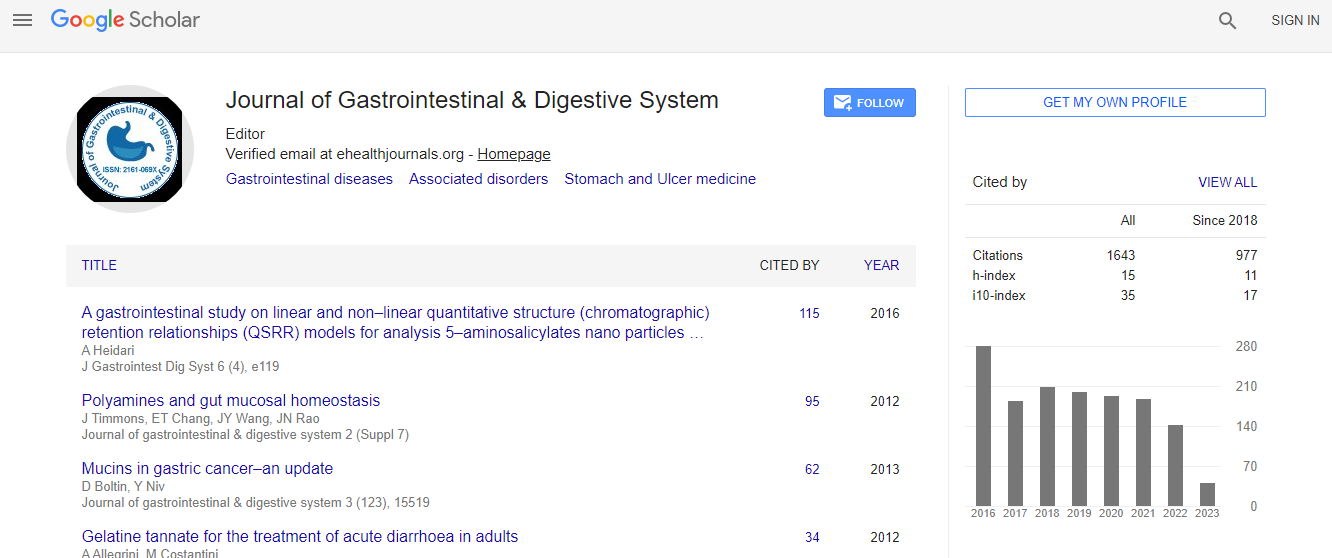Review Article
Bowel Imaging in IBD Patients: Review of the Literature and Current Recommendations
Lahat A1* and Fidder HH21Gastroenterology, Chaim Sheba Medical Center, Ramat Gan, Israel
2Department of Gastroenterology and Hepatology, University Medical Center Utrecht, P.O. Box 85500, 3508 GA Utrecht, The Netherlands
- *Corresponding Author:
- Adi Lahat
Department of Gastroenterology
Chaim Sheba Medical Center Tel Hashomer, Israel
Tel: +972-3-5302660
Fax: +972-3-5303160
E-mail: zokadi@gmail.com
Received date: April 20, 2014; Accepted date: June 02, 2014; Published date: June 10, 2014
Citation: Lahat A, Fidder HH (2014) Bowel Imaging in IBD Patients: Review of the Literature and Current Recommendations. J Gastroint Dig Syst 4:189. doi:10.4172/2161-069X.1000189
Copyright: © 2014 Lahat A, et al. This is an open-access article distributed under the terms of the Creative Commons Attribution License, which permits unrestricted use, distribution, and reproduction in any medium, provided the original author and source are credited.
Abstract
Imaging studies are essential in the diagnosis, treatment and follow up of IBD patients. The use of bowel imaging serves to confirm the diagnosis, assess disease extent and characteristics (inflammatory versus fibrostenotic) and complications. Accepted methods for bowel imaging in IBD patients are: CT enterography (CTE), MR enteropgaraphy (MRE), Abdominal ultrasound and capsule endoscopy. Each technique has its advantages and disadvantages. IBD patients have relatively high risk for colorectal cancer, small bowel cancer lymphomas and other malignancies. This risk is related to the chronic inflammatory process as well as to immunosuppressive therapy. Accumulating data shows that exposure to ionizing radiation elevates the risk for malignancy. Even exposure to relatively low doses of radiation as 50 mSv was shown to cause an increase in the occurrence of solid tumors, mainly colorectal cancer and urogenital malignancies. Individualized approach considering patients' symptoms, age, medical history, previous radiation exposure and malignancy risk as well as the local facilities and experience should guide physicians' decision regarding the preferred imaging modality.

 Spanish
Spanish  Chinese
Chinese  Russian
Russian  German
German  French
French  Japanese
Japanese  Portuguese
Portuguese  Hindi
Hindi 
